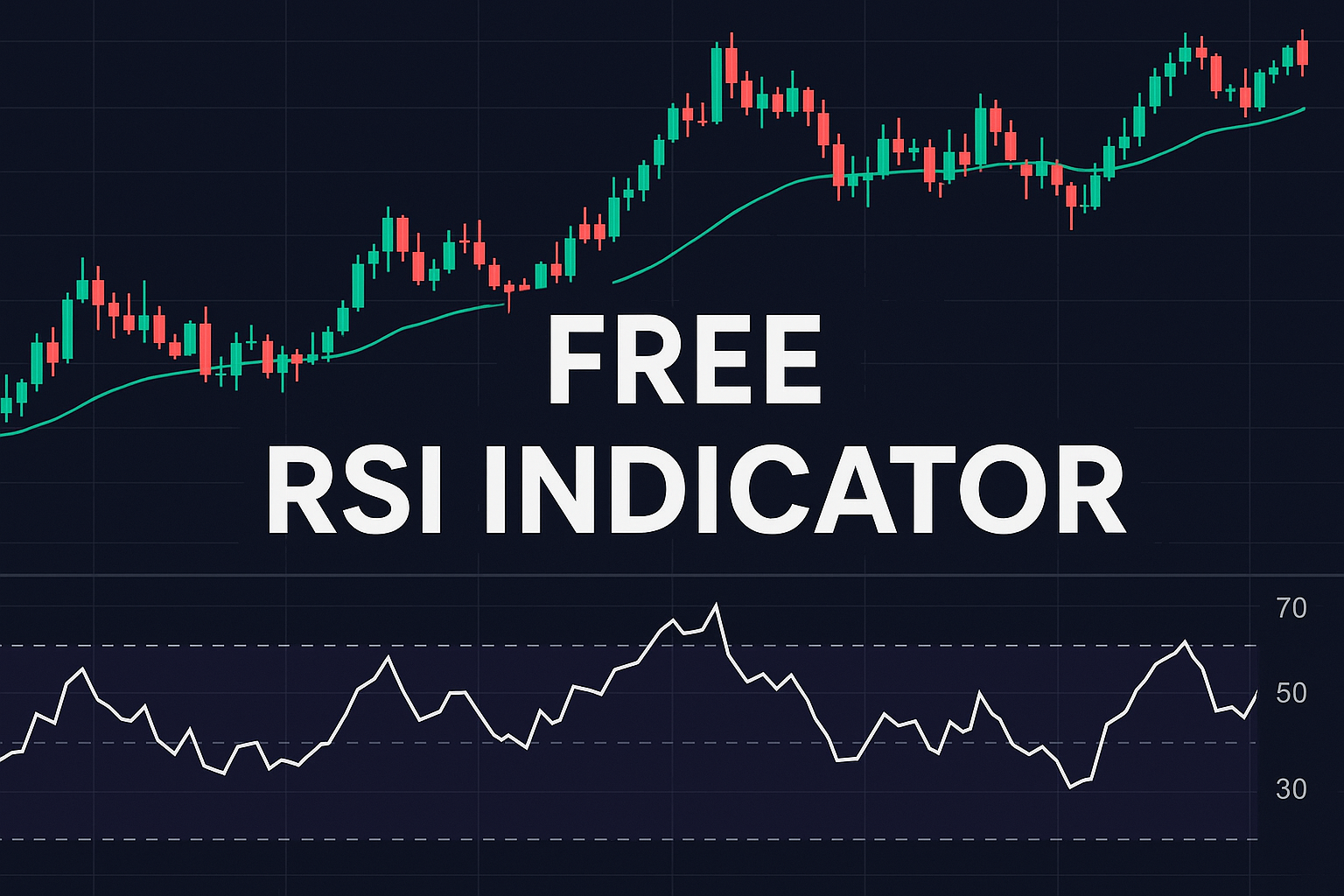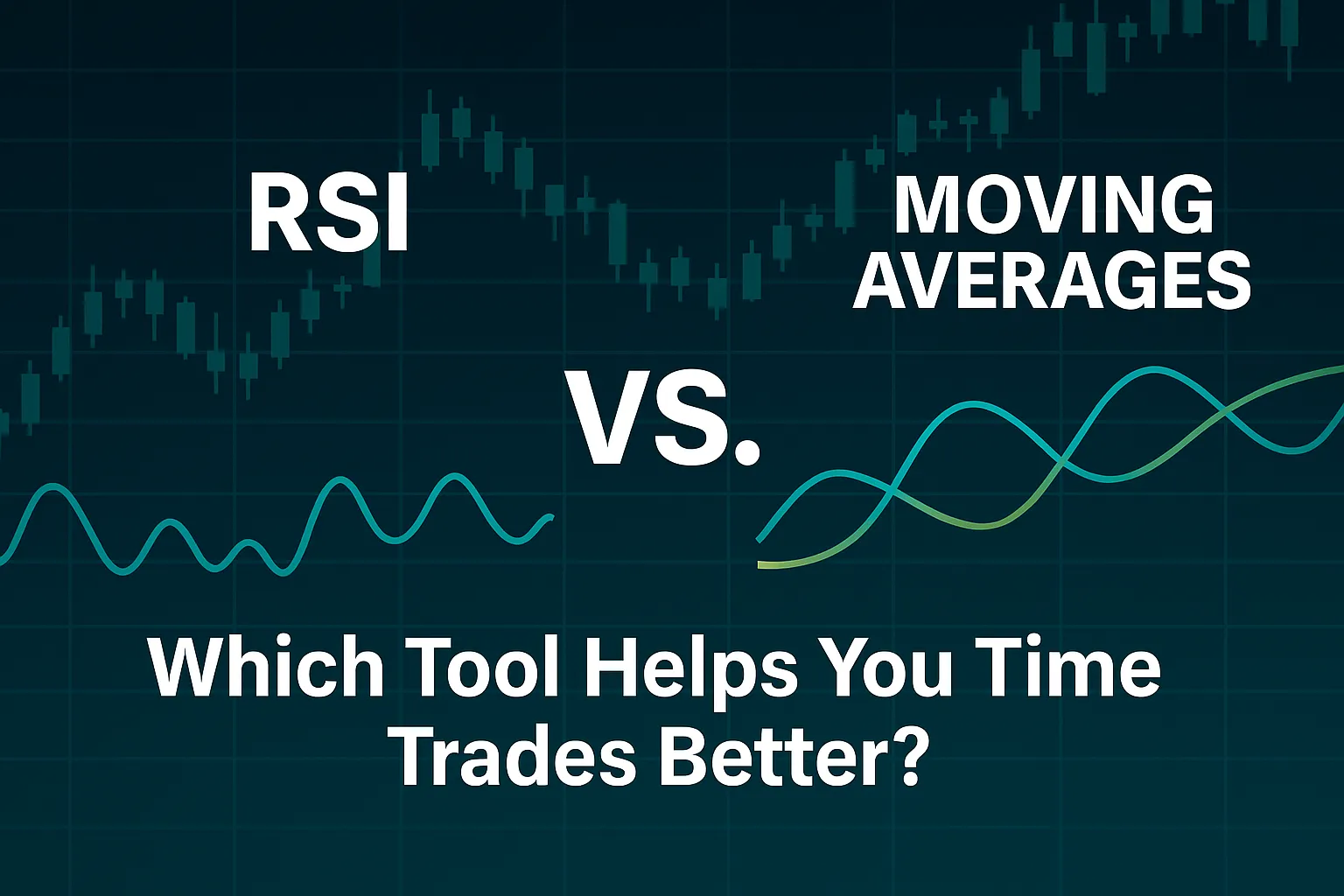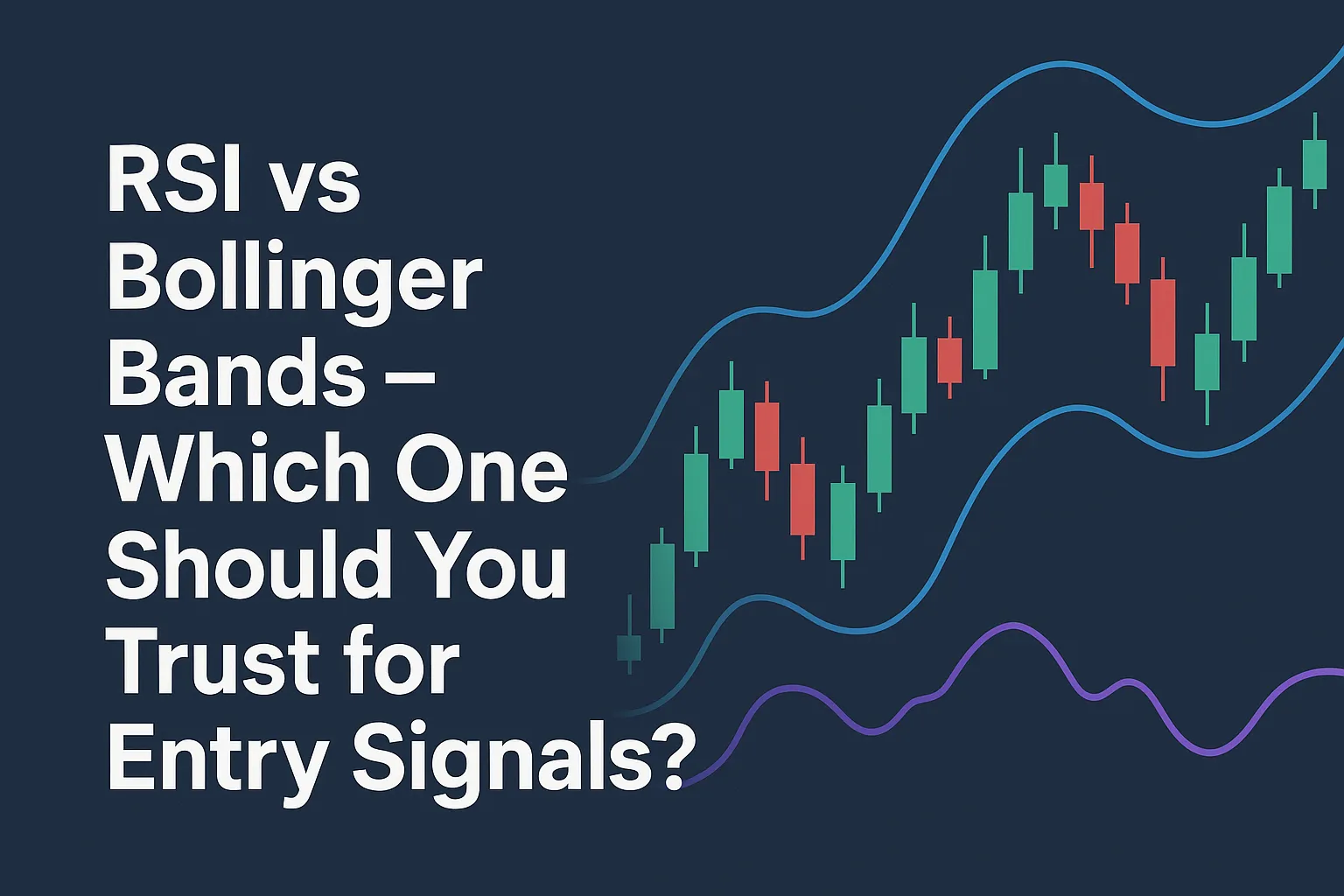Both RSI and Stochastic indicators are used to measure momentum — but they’re not the same. While they may look similar at first glance, each works based on different logic and performs best under different market conditions.
This post compares RSI vs Stochastic in detail and helps you decide which one to use in your trading.
What is RSI?
RSI (Relative Strength Index) measures the strength and speed of price movement over a fixed number of periods.
- Range: 0 to 100
- Key Levels: 70 (overbought), 30 (oversold)
- Best For: Spotting momentum shifts and reversal zones
What is the Stochastic Oscillator?
Stochastic compares a closing price to the price range over a given period. It’s more sensitive to price fluctuations and reacts quickly.
- Range: 0 to 100
- Key Levels: 80 (overbought), 20 (oversold)
- Best For: Finding turning points in choppy or range-bound markets
Stochastic has two lines: %K (main line) and %D (signal line).
RSI vs Stochastic – Key Differences
| Feature | RSI | Stochastic Oscillator |
|---|---|---|
| Purpose | Measures strength of momentum | Measures price relative to range |
| Signal Sensitivity | Smoother, less reactive | Faster, more reactive |
| Best In | Strong trends and reversals | Range-bound or sideways markets |
| Levels | 70/30 | 80/20 |
| Type | Single-line oscillator | Two-line crossover oscillator |
| False Signals | Fewer in trends | More frequent but early |
When to Use RSI
✅ In trending markets
✅ For divergence setups
✅ When price is approaching key support or resistance
✅ To confirm swing entries or exits
When to Use Stochastic
✅ In sideways markets or consolidation zones
✅ For quick scalping signals
✅ When you want earlier warnings of turning points
✅ To detect short-term exhaustion
Can You Use Both Together?
Yes. Many traders use both indicators together to filter signals.
Example Strategy:
- RSI confirms a trend or reversal
- Stochastic gives early entry using %K/%D crossover
- Both show overbought = stronger sell confirmation
Conclusion
Both RSI and Stochastic are useful tools — the right choice depends on market conditions and your trading style.
- Use RSI for smoother, high-confidence setups
- Use Stochastic when you need faster, more reactive signals
- Combine both for better precision and confirmation
🔍 FAQs
Which is more accurate, RSI or Stochastic?
RSI is more reliable in trends; Stochastic is better in ranges.
Is Stochastic faster than RSI?
Yes — Stochastic reacts more quickly to price changes.
Can I use both together?
Yes. They complement each other well when used with market structure.




